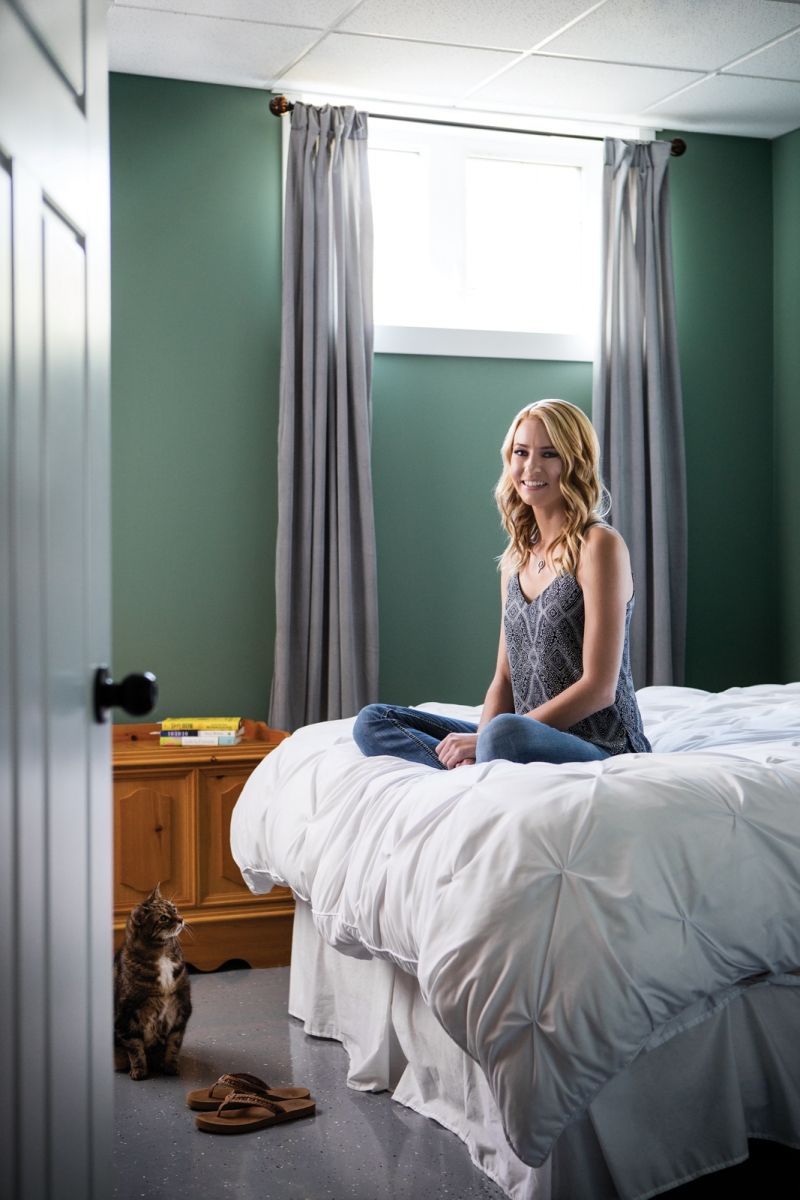Kerri Timbers stood in front of the sprawling pile of everything she owned in spring 2014 and had a moment of existential pause. Following a breakup, she’d moved out of a three-bedroom home in Sherwood Park and hauled everything to a friend’s garage in Stony Plain, filling it.
“I stood there the minute we unloaded and looked at it and thought, ‘I have debt and I have all this stuff and I don’t have happiness,'” says Timbers. It made her think about the point of her high-stress job, and how she’d lived, as she puts it, without intention. “It was pretty much a moment of clarity.”
That was the day the downsizing began for Timbers. Soon after filling that garage, the 36-year-old business analyst found a 590-square-foot apartment in the basement of a house outside the city for less than $1,000 a month, and took only absolute necessities before eventually returning to digitize important documents, photograph keepsakes such as old Girl Guides uniforms, then dispose of most of her stuff.
The move makes her part of a surprising group of simplifiers. These aren’t empty-nesters getting practical about physical and emotional vacancies. Instead, Timbers represents those early in life who see more cons than pros to owning or even occupying a traditional single-family house. It isn’t easy to learn how to live within a smaller geographical footprint, but, for Timbers and others like her, the reward of downsizing can be freedom in how they spend their money and their time, and how they connect with their communities.
Timbers’ decision to live with less is in keeping with recommendations from the City of Edmonton, which suggests 500 square feet as adequate per person while being easier on energy demands. Nevertheless, Timbers’s efforts set her apart. Edmonton isn’t a small-house kind of town. Of Canadian cities larger than a million people, it has the lowest density: about 123 people per square kilometre. More than half of all homes are single-detached and, according to 2010 numbers, average 1,950 square feet (double that of 1975) to accommodate just three people. CJ de Jong imagines a day when he’s closer to that 500-square-foot ideal. Three years ago, he sold the decade-old house he shared with a roommate in MacEwan. The 36-year-old University of Alberta librarian liked walking in nearby parks and being close to South Edmonton Common, but he had a feeling of disconnection. Work required a lengthy commute by transit, with off-peak reduced frequency discouraging after-hours socializing with co-workers as well as downtown activities such as yoga. Besides, there was snow to shovel, grass to mow, or some other homeowner’s chore needing doing anyway.
